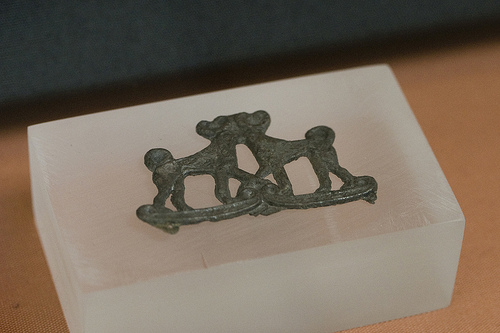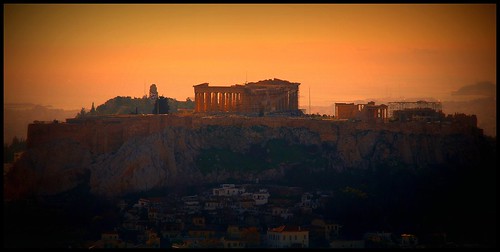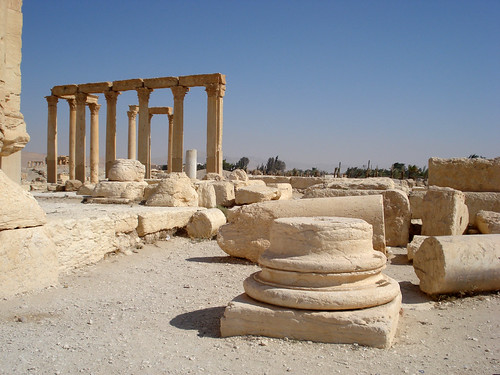Key Dates 1324 BC The figures date from around the time of the death of Tutankhamun, in 1324 BC. They were discovered, along with the rest of the treasures of Tut’s tomb, in 1922. Key People The figure depicted is 18th Dynasty Egyptian pharaoh Tutankhamun himself. They were found by Howard Carter, who located King Tut’s tomb. Key People: Tutankhamun Howard Carter These small statuettes of the famous boy king Tutankhamun astride a panther came in a pair and were located along with 32 other ritual figures inside a black resined wooden box in the treasury section of Tut’s tomb,…
-
-
In 2009, we saw the Terracotta Warriors tour America, racking up record attendance figures, while King Tut exhibitions criss-crossed the globe and the Staffordshire Hoard went on show in London just months after being unearthed in a West Midlands field by an avid metal detectorist. 2010 looks set to be equally as big a year for heritage exhibitions around the world. The iconic and controversial Lewis Chessmen will be reunited in Scotland for the first time in over 150 years in Edinburgh this May. The massive Shanghai World Expo will open around the same time, with a number exhibits themed…
-
With Bettany Hughes’ documentary ‘Atlantis: The Evidence’ set to première on BBC Two, what better way to prepare than to explore the Aegean Bronze Age treasures of the British Museum? If the Minoan civilisation was indeed home to the Atlantis legend, what better way to get to know the Atlanteans than through what they left behind? And, lets face it, visiting London’s most famous museum is far easier than getting a permit to dig beneath the sphinx. 😉 Though not that many items excavated by Arthur Evans can be found at the British Museum – I probably should have visited the…
-
Key Dates 2400 BC The chapel of the tomb of Akhouthotep dates from the Fifth Dynasty, around 2400 BC. It was re-assembled in the Louvre in 1903, by Georges Benedite who was curator in the Egyptian department. Key People Akhethotep was a high dignitary of the latter part of the Fifth Dynasty, succeeding three generations of his family in high office. This chapel from the mastaba (tomb) of Akhethotep was where priests and family of the deceased would have come to offer food and drink to his spirit, and recite texts that would assist him in the afterlife. It is…
-
Esther Jacobson-Tepfer Professor of Asian Art at the University of Oregon, Expert on the Archaeology of Mongolia Esther Jacobson-Tepfer is Maude I Kerns Professor Emeritus of Asian Art at the University of Oregon, where she taught undergraduate courses in the History of Indian Art, Art of the Silk Road, and Nomadic Art of Eurasia, and undergraduate and graduate courses in Scythian Gold, North Asian Rock Art, and Judaic Art. Dr Jacobson-Tepfer is a past recipient of the Ersted Award for Distinguished Teaching, and was the first director of the University’s Center for Asian and Pacific Studies. Dr Jacobson-Tepfer received her…
-
Key Dates Athens has been inhabited continuously for over 7,000 years. It became ancient Greece’s leading city in the 5th century BC, and went on to enjoy a period of cultural richness beyond parallel, before experiencing mixed fortunes in the Byzantine, Crusader and Ottoman periods. It became the capital of an independent Greek state in 19th century. Athens Greece Key People Athens is named after the Greek goddess Athena, daughter of Zeus. It’s associated with almost every great name from classical Greece and beyond: philosphers such as Socrates, Aristotle and Plato, dramatists such as Aeschylus, Aristophanes, Euripides and Sophocles, statesmen…
-
Archaeologist and historian Ross Burns knows Syria better than most, having lived there (and in Lebanon) for many years. He is the author of The Monuments of Syria: A Guide and Damascus: A History. Ross, who is currently preparing a doctorate on the archaeology of the Roman provinces of the Eastern Empire, has lectured at a range of institutions in Australia. He also leads study tours to Syria and Jordan for British and Australian travel companies. He explains why narrowing Syria’s ancient treasures down to a top 10 proves such a challenge: It’s not difficult to guess which of the…
-
A unique queens crown with ancient symbols combined with a new method of studying status in Egyptian reliefs forms the basis for a re-interpretation of historical developments in Egypt in the period following the death of Alexander the Great. In the thesis ‘The Crown of Arsino II’, Maria Nilsson shows that Cleopatra VII was not the only Ptolemaic female pharaoh Queen Arsino II came first, 200 years earlier. Nilsson argues that Arsino (316-270 BC) should be included in the official pharaonic king list as Ptolemy II’s co-regent; her royal authority should be considered equivalent to Hatshepsut, Tawosret and Amenirdis II,…
-
A unique queen’s crown with ancient symbols combined with a new method of studying status in Egyptian reliefs forms the basis for a re-interpretation of historical developments in Egypt in the period following the death of Alexander the Great. In the thesis ‘The Crown of Arsinoë II’, Maria Nilsson shows that Cleopatra VII was not the only Ptolemaic female pharaoh – Queen Arsinoë II came first, 200 years earlier. Nilsson argues that Arsinoë (316-270 BC) should be included in the official pharaonic king list as Ptolemy II’s co-regent; her royal authority should be considered equivalent to Hatshepsut, Tawosret and Amenirdis…
-
From a variety of sources, we know of hundreds of sports and games in the ancient world, some of which one can be traced from the beginning of writing in about 3,000 BC to the time of the Middle Ages. Many of these pursuits played a prominent role in their respective societies and transcended mere sport to become associated, for example, with religion, entertainment, the military, and social customs. Several sports listed below have parallels in the modern world even though in some cases there may be no direct ancestry. I have extended the discussion to include (in one instance)…








